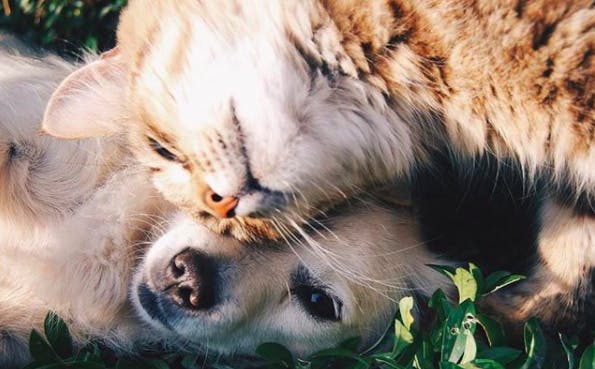Pet lovers have big hearts, which means there’s often room for more than one pet in their lives.
To help any of our members who are considering growing their pack, we asked the experts at our dedicated Vet Advice Line for some top tips on how to introduce new pets into the home.
Trending posts
Purr-use some of the top blogs our members have been loving this month- Top male dog names for your new furry friendGot a new furry family member in your pack? Check…

- Top female dog names for your new fluffy palWelcoming a new pooch into your family? Explore…

- 120+ gray cat names your silver feline will loveRecently welcomed a fluffy gray bundle of joy into…

- What are normal pet sitting rates?Discover the average pet sitting rates for animals…

- Unique dog names to stand out from the packDare to be different with our list of the best…

Bringing a new pet home can be an exciting time for us but it’s usually quite stressful for our furry family members. Don’t expect them to be best friends straight away, as this will take time and patience. Dogs and cats are very different socially – dogs like to live in groups and include the family in their “pack”, whereas cats are instinctively independent and not particularly sociable creatures.
Dogs can be territorial so, if possible, the first time a new pet meets your dog try to do this away from the family home so they can meet each other without this added pressure. It’s a good idea to let each pet get to know the other’s smell before meeting by swapping blankets or something similar; this allows the first meeting to have some familiarity with it.
Try bringing the new cat into the family home in a basket and leaving it in one room with a food bowl, water bowl and their own litter tray, and let your own dog or cat meet the new addition for short, fully supervised, periods of time until they are used to each other.
It may take a few weeks before your pet accepts their new furry friend and, in this time, you can expect changes in behaviour – dogs and cats could revert back to having “accidents” in the house. They may also hide more or become more vocal and attention seeking. This is all relatively normal, but if it goes on longer than a few weeks then it may be worth getting expert advice from a veterinary behaviourist.
A good indication that your new pets will get along will come from their body language. At first, they will be suspicious of each other and move slowly and low to the ground. When they decide it’s OK, you will see a dog start to play. At best, your cat will tolerate the new addition and, at this stage, that will be excellent progress!
There are various products you can buy to help this process along including pheromone diffusers, such as Adaptil for dogs and Feliway Friends for cats. These help pets come to terms with these drastic changes in their life.
To help keep pets safe and happy at home, during all sits members have unlimited access to a free 24/7 Vet Advice Line. From small concerns about nutrition and naughty behaviour to advice on more serious medical matters, members can find the number on their dashboard and call it for expert advice from veterinary nurses, anytime, anywhere whilst on a sit.

